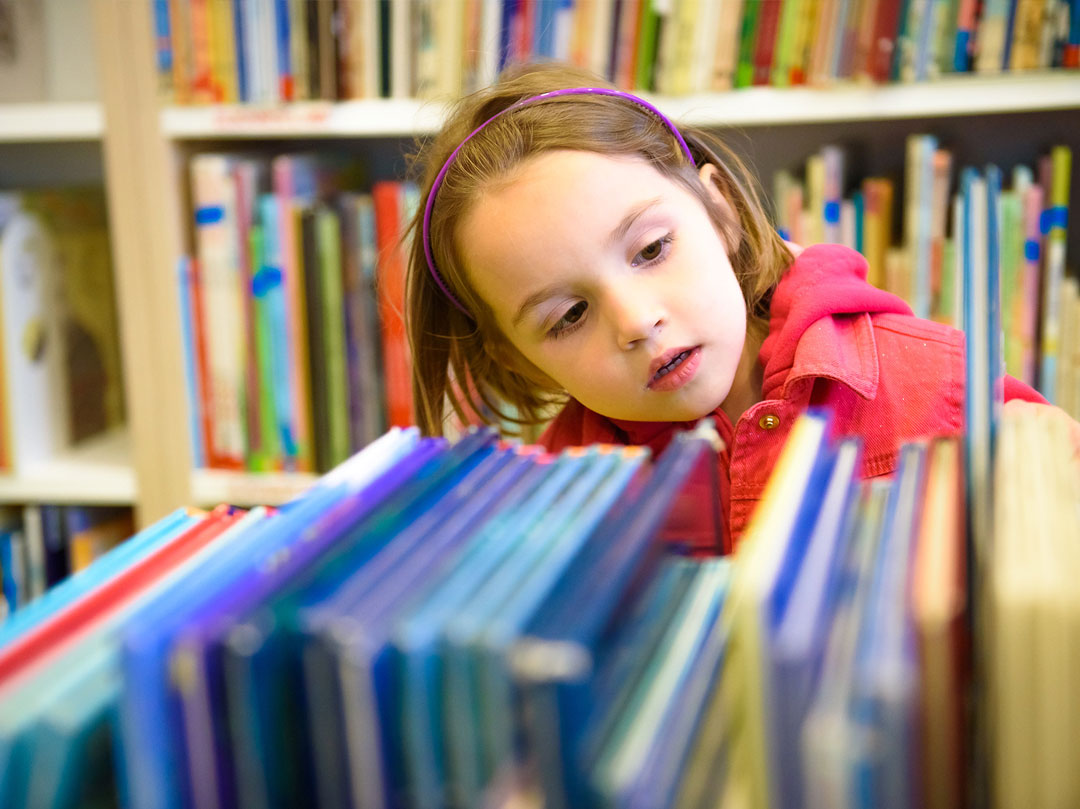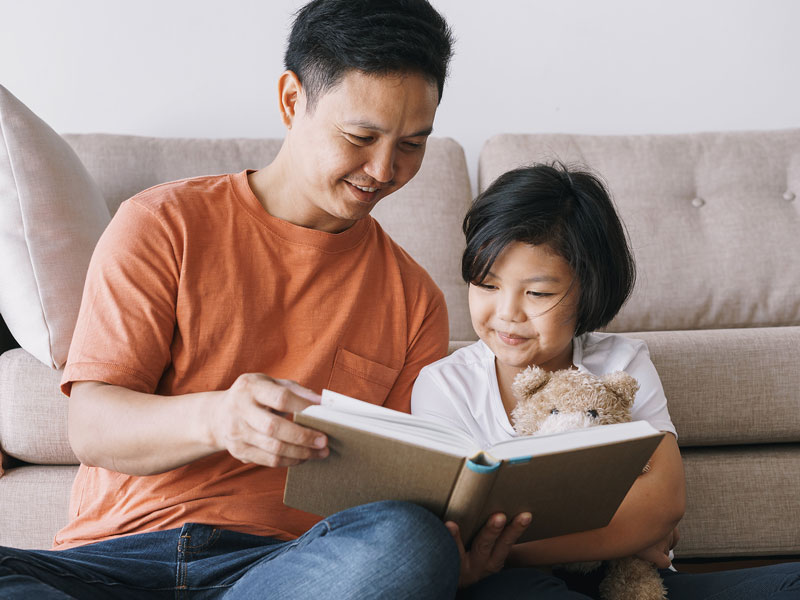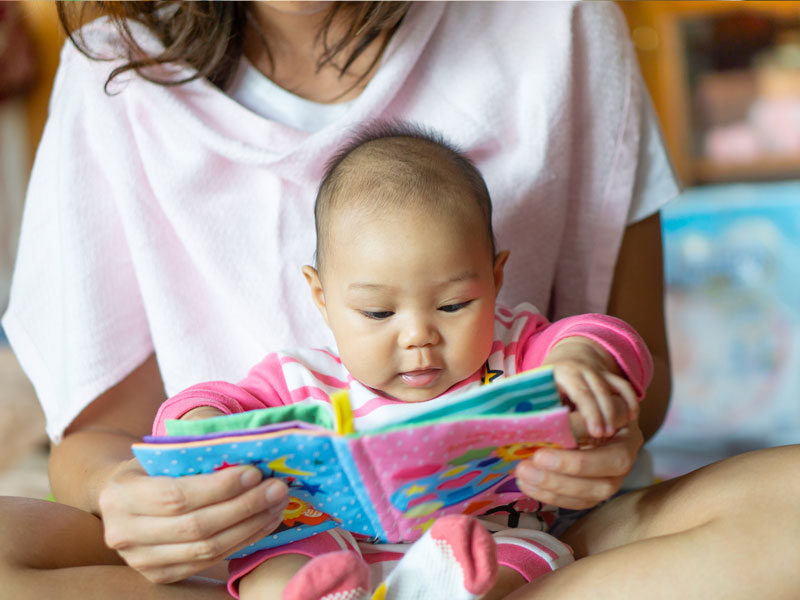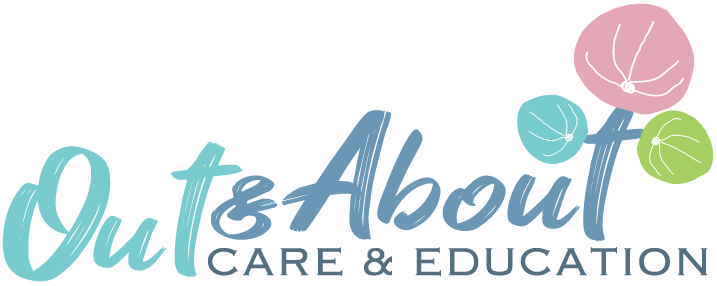SELECTING SUITABLE BOOKS FOR YOUNG CHILDREN
Books for children appear in many venues these days—even at the post office and online, but how do we know if they are a good or suitable read for our children? It is helpful to consider the elements of a good story and view the offerings through that filter, before purchasing.
Reading is a skill all children need to learn, so it is vital that we promote this from early on. The ability to communicate, with clarity, to organise thoughts and express them as required is an essential life skill.

It is never too early to be exposed to good examples of the literary world. Good quality books and illustrations help you make the most of time spent reading, so select your child’s reading material carefully using the tips at the end of this article.
Quality reading material need not cost you anything. Join your local library and regularly take your children to swap and peruse books. This will give a wide selection, offering varied styles of reading matter that will pique your child’s interest. Give your child the lifelong gift of reading for pleasure and teach them to care for books.
As a rule, try to make about 30% of your child’s reading material about gaining information so they become used to enjoying reading for knowledge as well as the sheer enjoyment of a rollicking good story. Remember your child’s brain is developing and the skills required to focus, retain information, and recall as necessary are also developing. Help train the brain from an early age to acquire and manage these skills.

The enjoyment of a good book comes not only from the actual story but from the experience of sharing the story with a parent or sibling. Story reading together offers an important opportunity for bonding and sharing the adventures contained within the pages. When an adult reads with a child, the child receives the message, loud and clear, that they are valued and worth spending time with; that adults enjoy their company and hearing the ideas they have about the story or where it may go next and so on.
These are all valuable and important emotional and confidence building messages for young children to receive.
The time spent developing close bonds in the early years reap rewards for parents later on when children have other tugs on their loyalties and peer pressure builds. Story telling is a perfect time to strengthen bonds and develop trusting relationships, and a clear understanding of how each other thinks and views the world. The importance of shared moments during the early years cannot be overstated.
E-READERS
Whilst we enjoy E-readers as adults, they are not ideal for children. Children do not have our life experience to correctly interpret what they see in illustrations. In fact, children can become very unsettled and fearful at images of monsters, crazy animal antics, and so on if an adult is not with them to put the images into perspective.
As with toys, noise-making books are not ideal as they prevent children from imagining/trying to make their own sounds or expressing their own ideas about possible sounds.
As the well-known Australian author and literacy lecturer, Mem Fox says— “ you do not send your young child to the park up the road alone, so why would you send your child off into the E-world alone without your guidance and support?”
The best stories are enjoyed by both the reader and the listener as new worlds are opened up in a shared adventure. Children have vivid imaginations and will add their own twists to a story if given the opportunity to share. These terrific and imaginative experiences build confidence and develop an appreciation for the nuances and sheer fun of language and how to use it to express ideas or change story outcomes. This will be a valuable skill in formal learning at school—creative thinking in action.
Research tells us that children who read well can imagine the story in context in their minds are likely to do better at school. This is a skill that is lacking in many school students today and one we must try to instill early.
What to look for in a good book? Our tips:

For 0—2 years: Make your selections durable (and sometimes chewable). Images need to be simple and clear for infant eyes to focus on and assist with first words and recognition of images. Help them point to items and name them—get those first words happening. Even infants can practice the physical skill of turning pages and managing to hold a book. Help them learn to be respectful of books and not chew them or rip pages. This will take some practice but it is well worth the effort.
For 3-5 years: Children’s language skills are rapidly developing at this age, so a wide variety of books with different information and story lines will help them to practice how to express their thoughts and ideas clearly. Continue the lessons in being respectful of books as the cardboard books of younger ages make way for paper and more fragile versions.
Remember to offer books for information and fun. Balance these so your child learns how language is used in different genres. Children who know this early manage English lessons better at school as this understanding becomes intuitive.
For school age: Reading material for children will become more complex the older they are. Fewer illustrations are required as children should have developed the skill of imagining the characters and events in their minds. This is important to their understanding of language and how to use it themselves to describe events and stories they create.
CONTACT OUT & ABOUT CARE & EDUCATION
CONTACT ONE OF OUR CENTRES
Out & About Care and Education
2 Newspaper Place
Maroochydore Q 4558
newspaperpl@outandabout.net.au
07 5413 8099
CONTACT NEWSPAPER PL
Out & About Care and Education
30 Dalton Drive
Maroochydore Q 4558
daltondr@outandabout.net.au
07 5479 1411
CONTACT DALTON DR
Out & About Care and Education
6 Mooloolah Rd
Mooloolah Valley Q 4553
mooloolah@outandabout.net.au
07 5356 9323

